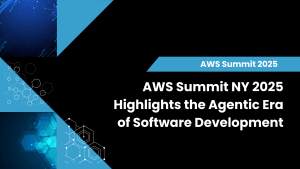Multicloud networking is fast becoming a cornerstone of modern multicloud strategy, driven by a wave of significant acquisitions that underscore its increasing importance. With Cloudflare and Cisco’s recent market moves, a spotlight shines on multicloud networking’s role in shaping the future of cloud infrastructure. This analysis offers an in-depth look at the forces propelling multicloud networking’s rise, its anticipated direction, and strategic implications for enterprises navigating this dynamic landscape.
Introduction
The world of cloud computing is constantly evolving and networking has become a key focus for organizations looking to optimize their cloud infrastructure. As more businesses adopt multiple cloud environments, the importance of efficient multicloud networking becomes increasingly clear. Recent acquisitions, such as CloudFlare’s signal on March 6th 2024, indicating their intention to acquire Nefeli, and Cisco’s plan to acquire Isovalent from late December 2023, highlight a growing interest and investment in multicloud networking. In this article, we will delve into the significance of these market movements, explore the reasons behind the increasing interest in multicloud networking, discuss its future trajectory, and share our perspective on what lies ahead.
This research is partially based on a discussion Bob Lalerberte, Principle Analyst with theCUBE Research, and I had with Chris McHenry, VP of Product Management for Aviatrix, to unpack the current state and future potential of multicloud networking.
Why is multicloud networking so hot?
Multicloud networking is gaining popularity as it addresses the challenge of seamless, secure, and efficient interconnectivity across diverse cloud platforms. With more businesses adopting a multicloud approach to optimize performance, cost, and resilience by using services from different providers, there is a growing demand for networking solutions that can bridge these environments. Multicloud networking not only enables this connectivity but also integrates critical security considerations, making it a dual force for enhancing cloud infrastructure’s performance and protection.
Networking, in general, is undergoing a renaissance as artificial intelligence (AI) requires organizations to regularly connect data from different data platforms in different clouds and on-premises. However, multicloud networking is not just about cloud-native applications and SaaS applications. To build and populate AI applications, you often need data from applications built on virtual machines, containers, bare metal, and, in some cases, the mainframe.
Some open-source technology has come around to solve this in the Kubernetes container world in the form of the service mesh, with the most popular being Istio-based and Linkerd-based. A service mesh offers a transparent and language-independent way to automate the management of service-to-service communication, which is crucial for supporting complex multicloud and microservices architectures. By controlling how different parts of an application share data with one another, it plays a vital role in enhancing the security, observability, and reliability of cloud applications without requiring changes to the cloud-native application code.
One limitation of using the service mesh is that it is not easily integrated with heritage applications, meaning it is good for many greenfield builds. This means that a solution needs to be deployed to bring together the cloud-native application components and the heritage applications, which contain much of the organization’s core logic and intellectual property in the form of data. As organizations endeavor down the multicloud networking path, they must focus on four things: security, supportability, compatibility with heritage applications, and performance.
Where will security and multicloud networking go in the future?
The future of multicloud networking is set for continued growth and innovation. As the cloud market continues to evolve rapidly, there is an increasing need for advanced networking solutions that can adapt to and integrate with multiple cloud platforms. This includes capabilities for managing complex network architectures, ensuring security at scale, and providing the agility needed to respond to changing business needs.
One thing that has become clear is that integrating security within multicloud networking is not just an added feature, but a fundamental requirement. The complexity of managing and securing communications across multiple cloud platforms magnifies the risk landscape, making it imperative to embed security solutions. Aviatrix has taken this approach to multicloud networking by delivering the Aviatrix Distributed Cloud Firewall in October 2023. This approach transcends traditional perimeter-based defenses, advocating for a model where security and networking converge to offer holistic protection. The emphasis on security within multicloud networking underscores the need to seamlessly enforce consistent security policies, ensure encrypted communications beyond just the service-to-service layer, and provide comprehensive visibility across all cloud environments.
As organizations navigate the intricacies of multicloud architectures, the ability to integrate security natively into the networking strategy becomes a critical factor in safeguarding data, maintaining compliance, and enabling trust in cloud operations. This view of security is a testament to its dual role as both a challenge and a catalyst in the multicloud networking paradigm, urging enterprises to adopt a more integrated, forward-thinking approach to cloud security.
Moreover, organizations building applications that include artificial intelligence (AI) and machine learning (ML) will not make any of this easier, and multicloud networking will play a crucial role in enabling these advanced applications across diverse cloud, colocation, and on-premises environments.
Our Perspective
We believe that multicloud networking is rapidly growing and will continue to be an important solution for the many challenges and opportunities faced in this area. Recent acquisitions by Cloudflare and Cisco demonstrate that multicloud networking is recognized for its strategic value, and there is a commitment to advancing its capabilities. We predict that this is only the beginning of the consolidation in this space as public cloud vendors move into the market. Pioneer in the space, Aviatrix, along with Prosimo Inc. and Alkira Inc. are some of the companies that we expect to see more of.
For enterprise organizations, embracing multicloud networking does not just enhance connectivity but can also provide a secure multicloud application landscape and build network bridges for AI and ML applications to utilize data as intellectual property. As the market continues to evolve, businesses that can navigate the complexities of multicloud environments effectively will be well-positioned to capitalize on the many benefits they offer, including improved flexibility, performance, security, and cost efficiency.
In conclusion, the importance of multicloud networking is increasing daily. This is being driven by significant market moves and the growing recognition of its strategic value. As companies continue to progress in their digital transformation journeys, the role of multicloud networking will become even more central. This will require continued investment, research, and development in this critical field.



